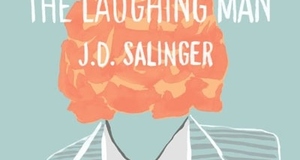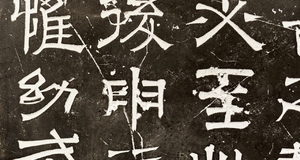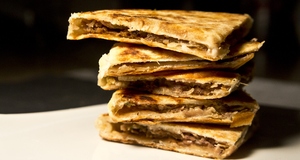In Defense of The Spirit Of An Author: On Anne Fadiman's "The Spirit Catches You and You Fall Down"
By
2010, Vol. 2 No. 02 | pg. 1/1
KEYWORDS:
Anne Fadiman’s The Spirit Catches You and You Fall Down: A Hmong Child, Her American Doctors, and the Collision of Two Cultures is a non-fiction exploration of culture and medicine that tells the tragic story of the Lee family and their daughter Lia, an epileptic Hmong girl. The book has been heavily criticized for various biases, sympathies, and idealization. Overlooking these criticisms blindly believes one author’s words, but accepting them fully misinterprets the entire text. The most beneficial reading of Fadiman’s The Spirit requires seeing the work as a writer’s personal journey in reporting back to her culture. This claim is not to suggest that Fadiman has failed her duty as a reporter, though she would have if her stated mission was to write a 200-page unfiltered news report on the Lee family and their struggle with their epileptic daughter in the Merced Community Medical Center. Fadiman, however, articulates no such mission. The reader should know The Spirit is no Associated Press report; Fadiman inserts herself into the narrative as a character and speaks often in the first-person. Though these elements fit under the category of Gonzo journalism, it is safe to presume Fadiman would not blend fact and fiction in a story as critical and heart-wrenching as the tale of Lia Lee. Any piece of work about culture is bound to go beyond the details and enter the realm of psychology and ethics, and even provoke the author’s own bias. Fadiman’s preface for The Spirit is particularly helpful in understanding her debated intentions. She casually explains something vital for our analysis: she does not see the cultural battle in her book as being between America and the Hmong, but specifically cites “the culture of American medicine” and that of the Hmong (viii). Fadiman admits to knowing little about either culture before embarking on her journey, and this decision to have the two cultures in collision be so specific and unknown to her does put her in a rather neutral position. In the preface, Fadiman writes, “I realized how much I liked both sides and how hard it was to lay the blame at anyone’s door” (viii). Presuming Fadiman is an honest writer, if she was truly biased or sympathetic in a single direction, she would not have prefaced her book with such a declaration. She sounds to genuinely find herself, much like myself (proving her success in neutrality), in a sad spot of nuanced confusion.On the issue of author bias, in Dr. Monica Chiu’s “Medical, Racist, and Colonial Constructions of Power” essay, Chiu praises Fadiman’s book while also making the overarching accusation that her work is inherently counter-productive due to her Western standpoint. Chiu writes that Fadiman’s “text often contributes to reinscribing her subjects into the very colonial parameters from which she attempts to extract them” (2). This accusation would appear devastating, if Fadiman were to have explicitly stated in the preface that she was writing about Western versus the Hmong culture to extract the Hmong from their current societal parameters. Chiu might be best answered by taking another look at Hmong writer Mai Na M. Lee’s review, who describes The Spirit as a collection of “personal recollections, folk stories, beliefs, and religious and medicinal practices to intimately reveal the Hmong to the reader” (1). This explanation represents the book as the multi-faceted project that it is, arguing its main purpose is to, on an intimate level, educate the reader on the non-Western culture. I would further Lee’s definition in clarifying that all those components also intimately reveal the American medical culture to the reader, specifically in Merced, California. A book about cultural collision will likely invite not only the personal attitudes of the writer, but also the reader. Chiu writes that Fadiman’s “sympathies list toward the Lees,” but that is hardly apparent, let alone proven effective in influencing the reader’s own views (16). Issues of female and animal rights issues come up throughout the entire book but are never explicitly analyzed or identified as such. In chapter 8, “Foua and Nao Kao,” Nao Kao tells the story of a man named Mr. Xiong. Mr. Xiong has a son who was made “sick and restless and crazy” by an evil spirit, known to the Hmong as a dab, in a place called Bear Creek (101). Nao tells Fadiman, “the only way to cure that kind of sickness is to sacrifice a dog, and this country won’t allow you to kill dogs” (101). This cultural clash extends beyond Fadiman’s preface; this instance is not a battle between the medical culture and the Hmong culture, but rather Hmong customs and American law. Even as an American, Fadiman stays neutral and simply quotes the Lee father. Though animals of all kinds are killed and served up on menus across the West, the concept of murdering a domestic pet for the purpose of curing a crazy child will disturb many American readers (I am living proof). Fadiman’s accused “sympathies” do not help the Lee case here. Nor do they make the reader sympathize with the need for the author to “Use an older male interpreter to compensate for [her] lack of status as a younger woman” (93). There is no hint in Fadiman’s writing that this offends her. It is hard to condemn an author for her Western bias when she does not even condemn her foreign subjects for supporting animal abuse and female inferiority. Instead, the writing successfully invites the reader’s own biases and emotions to come into play. But who is that reader? While any literate person is free to read any text, most books are written with an intended readership as publishers often seek profit from a particular demographic. Fadiman’s main audience is a Western crowd wishing to learn about diversity and cultural collisions in their own homeland. The opening chapter, “Birth,” is evidence of this. This first chapter was likely intended to be the reader’s first look at the Hmong because it is one of the more culturally shocking stories in the book. The language proves it is written for the Western reader: “No birth attendant was present…she labored in silence” (3). The negative declaration regarding a “birth attendant” shows it is written in terms of relevance to the non-Hmong, as is silent labor (a concept only appearing in America when practiced by Scientologists). Fadiman is also accused, specifically by Chiu, of using “a kind of coded National Geographic language” in describing Lia’s parents Foua and Nao Kao (23). Chiu makes a good case here, citing specific phrases that appear biased and borderline racist (Nao Kao “look[ing] intelligent” rather than “tall, good-looking, athletic” MCMC doctors Neil and Peggy) but this hardly takes much away from the reading (22). The National Geographic argument is weakened by Fadiman’s insertion of herself in the narrative. In “Foua and Nao Kao,” Foua and fourteen-year-old daughter May Ying Xiong dress our narrator as a Hmong bride (102). Fadiman writes the makeover was “a transformation [Foua] was certain would render me irresistible” (101). After a page of describing the informative details of the process, Fadiman tells the reader that her boyfriend George proposed to her, suggesting, “Foua’s work must in some way have had the intended effect” (103). Such personal side stories, fusing with information about Hmong culture, tell the reader that The Spirit is not simply some medical textbook or feature article on the Hmong, but a deeply personal and complicated story, both in content and in form. Even though we have established the intended readership and inherent standpoint of The Spirit, no reader could support even a personal book such as this if there were a lack of truth in some of the writing. Lee writes of the aforementioned chapter wherein Foua gives birth in a squatting position to twelve children on her own, calling the event “highly improbable” and eventually “unbelievable” (2). This should immediately raise eyebrows as Lee is accusing the award-winning reporter of what most would consider a journalistic faux-pas: getting her facts wrong. This is surprising in this piece because if someone calls a work a “heart-wrenching account” that serves as a “valuable study of cross cultural medicine,” the work would not be untruthful (3). Lee provides no proof but her own personal skepticism, even if it is from a Hmong standpoint. It is interesting how cultural bias even plays into reviews of the book, further proving the subjectivity of this sort of work. Although The Spirit is written, as Lee says, with a “richly charismatic and eloquent style,” the book is no simple third-person narrative about a Hmong family battling the American medical system (1). It is, however, an educational and personal depiction of medicine and tradition. While Fadiman is accused of sympathizing with the Lees and simultaneously revealing a Western bias, these arguments are not only weak but are irrelevant from one’s reading (for that standpoint is innate and the sympathy did not result in my own). The text should be taken for what it is by the (likely Western) reader: a personal and informational work that reveals much about the author, the reader, and the two cultures in question. Chiu, Monica. "Medical, Racist, and Colonial Constructions of Power: Creating the Asian American Patient and the Cultural Citizen in Anne Fadiman’s The Spirit Catches You and You Fall Down." Hmong Studies Journal 5 (2004): 36. Hmong Studies. Web. 17 Nov. 2009. Fadiman, Anne. The Spirit Catches You and You Fall Down. New York: Farrar, Straus and Giroux, 1998. Print. Lee, Mai Na M. "Book Review: The Spirit Catches You and You Fall Down." Hmong Homepage. N.p., n.d. Web. 17 Nov. 2009. Suggested Reading from Inquiries Journal
Inquiries Journal provides undergraduate and graduate students around the world a platform for the wide dissemination of academic work over a range of core disciplines. Representing the work of students from hundreds of institutions around the globe, Inquiries Journal's large database of academic articles is completely free. Learn more | Blog | Submit Latest in Literature |


















